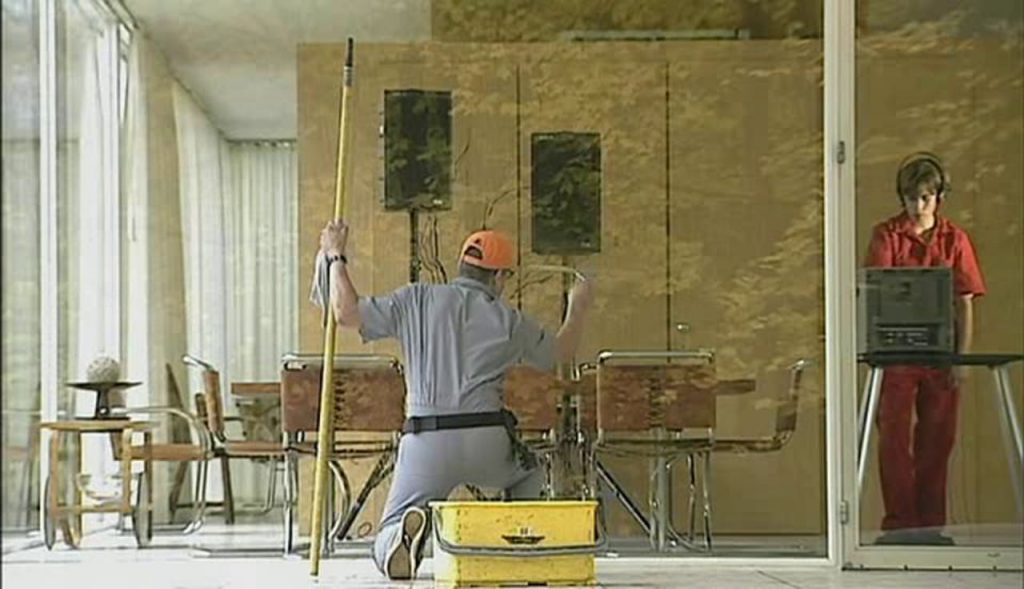Artist:
Iñigo Manglano-Ovalle (born 1961 in Madrid, Spain; lives and works in Chicago, USA).
Materials:
Multi-channel video installation and projection, CD audio recording, and mixed media; dimensions variable.
Description:
A 12-minute video of a window cleaner attending to the Mies Farnsworth House (1951) with an oblivious girl in the house’s interior. Several of Manglano-Ovalle’s other works also deal with Mies, including Alltagzeit (In Ordinary Time) (2001), a 35-mm film set in the Neue Nationale Galerie and Always After (The Glass House) (2006).
“In the first installation, Le Baiser/The Kiss, [Manglano-Ovalle] appears as a window washer patiently and lovingly squeegeeing the front facade of the famous glass-and-steel, single-room Farnsworth House that Mies built in Plano, Ill. Inside the house, oblivious to his caresses, a young woman listens on headphones to a digital music mix, which alternates on the installation’s soundtrack with slurpy washing noises.
“The double-sided video screen is mounted in the middle of an aluminum replica of the Farnsworth House suspended from the ceiling. The boundary between the viewer and the artwork is as transparent—and as impenetrable—as the glass wall that seems, even more than the woman inside the house, the object of the window washer’s affection.
“‘Think of this beautiful building as if it were a beautiful human being,” said the gallery owner Max Protetch, who represents Mr. Manglano-Ovalle in New York. ‘Think of it as if falling in love with someone who gives you nothing back. A total ice queen. Yes, Iñigo is washing the windows here. And he is talking about Mies’s romance with Dr. Edith Farnsworth, a romance that ended in the most traditional of American ways, in litigation. But he is also speaking eloquently about what Mies was about, in some ways teaching us more than the scholars do about the relationship between transparency and space’.”
—Ken Shulman, “A Love-Hate Affair with Architecture,” review of Iñigo Manglano-Ovalle, Rose Art Museum, Waltham, New York Times, March 31, 2002.
“‘The moment you transgress, you caress. And the moment that you intervene to subvert the building, you erase your intervention. You don’t leave a mark behind. So it’s all about the artist trying to critique the father, or modernity, and then failing. As the actor, you’re artist, laborer, and architect. You’re the artist because you’re making the film and because sometimes, when you’re washing the windows, the camera watches your hand in a gesture, almost a painting gesture across the pane. But you’re also the laborer who, in that gesture, is just simply washing a window. It’s mundane. Then you’re outside the building tending to its form, so you’re the architect’.”
—Iñigo Manglano-Ovalle, “Le Baiser/The Kiss, video still (2000),” art21.


